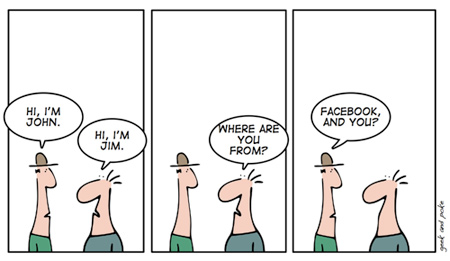I work in enterprise software business. So I know a thing or two about peculiarity of enterprise software industry.
One thing that distorts the enterprise software market is the fact that buyers are not the users. Because those who sign the check are not the users (although it's changing somewhat due to BYOD and Consumerization of IT, it still remains as more common way of software procurement), there are all kinds of distortion in the market. In enterprise software world, there are many instances where customers pay for licenses not because they like the product, but because it's a product that they know and fear.
Software product does not win by its merit alone. It wins because of disciplined sales team and great team work in addition to a good product. But it keeps the users because buyers are often reluctant to migrate out of the current system, or even worse vendors don't make it easy to migrate to other solutions.
But consumer space is a lot different. Everyone makes their own choice. When we don't like the choice, we don't hesitate to look for other alternatives or hack our own solution to solve the problem. Each user is the buyer.
It should be funny, then, to notice the similarities between social networking sites and enterprise software products.
Popular social networking services are all free. Users are not paying money to use the service. Users are compromising their data privacy and getting marketed to, instead. One can argue users are paying for their service with their eyeballs and content. The point is that there are real buyers called marketers. Marketers pay money to get access to the users.
2. Vendors forces users to make a choice often not in user's interest.
Twitter locking down the API access to third party consumer Twitter apps is one example. Instagram cropping their photos on Twitter display is another. Social networking sites are not serving the users but instead maximizing how they can be more attractive to their paying users, marketers.
3. It's difficult for users to stop using because of all the legacy data and contact info.
It is incredibly difficult to switch social networking site for many reasons. One is that many social networks do not federate. Twitter does not talk to LinkedIn. LinkedIn does not talk to Facebook. Google+ does not even let the third party tools to post via open API. They started to allow users to download their data, but it's not in a format that can be easily imported into another social networking service. Contacts in one network cannot be reached from outside.
4. End user support is virtually non-existent.
Try reaching out to Twitter customer service as an end user for account access problem. Unless you know someone inside or have a social celebrity Klout score, it's very difficult to get someone to answer your question. In this regard, social networking services are actually worse than the most enterprise software vendors. In enterprise software world, people actually pick up the phone because users are connected to the buyers. In social networking sites, users are not represented by the buyers at all.
I have to think that Tent.is and App.net users see these points and that is why they are piloting the new networks. What about you? What frustrates you the most?
 |
| This comic won't work if social networks talked to each other. Source: http://www.scribendi.com/advice/understanding_social_networking_websites.en.html |
No comments:
Post a Comment